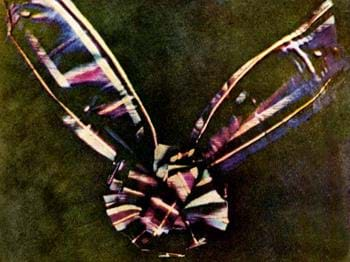15 Fun & Interesting Facts About Photography
Trivia Questions and Fun Facts that Seem Unreal but are True About Photography
First Photography PaperJoseph Niepce developed the first photography paper in the 1820s using Syrian asphalt, also known as Bitumen of Judea. This black viscous liquid is light-sensitive
Left Side or Right SideYou would be surprised to know that the left side of your face tends to look better in photos. A study conducted at Wake Forest University found this to be true. The researchers came to this conclusion by pointing out that our left side shows a higher intensity of emotion. This fact creates the perception of more attractiveness in the viewers’ eyes.
First FlashesPhotographers created the first flashes using potassium chloride and aluminium. Interestingly, these flashes were the result of the explosion resulting from the combination of these two substances. If the artist mixes the two materials without any control, it can create a massive explosion.
How Many Photos Do People Shoot in a Year?It is estimated that we take over a trillion photos every year (1,000,000,000,000). People upload around 300 million photos on Facebook and 95 million photos on Instagram every day. Today, human beings take more pics in 2 minutes than all the photographies made in the 18th century.
No Smiles in Old PhotosYou will not see people smiling in old photos because the technology required hours of exposure. It is not possible to smile and stay still for hours.
Even the greatest names in the industry manipulated their photos. Ansel Adams is perhaps the most iconic name in photography history. The landscape photographer is famous because he retouched most of his works. He frequently used techniques like burning and dodging to create better results.
Louis Daguerre shoots the first photo of a person in 1828. Interestingly, he did it unintentionally. He wanted to capture the Boulevard du Temple, Paris on celluloid but the 7-minute exposure caught a man standing in the street.

‘The Rhine II’ made by Andreas Gursky in 1999 was auctioned for $4.33 million in 2011. It is still the most expensive photograph sold, as there is no proof of other higher-priced sales claimed.


The First Color Photograph
Thomas Sutton took the first colour photograph 1861 layering three different images through red, green and blue (RGB) filters. He projected the images on a photosensitive plate using corresponding filters. The credit for the first Single Lens Reflex (SLR) camera also goes to Thomas Sutton.

First Digital Camera
Steven Sasson invented the first digital camera in 1975. At the time he was working at Eastman Kodak. The camera weighed 8 lbs. (3.6kg) and captured pictures at 0.01 Megapixels. It weighed four times what a modern DSLR weighs.

The Most Viewed Photo in History
The old Windows default screen called ‘Bliss’ is considered the most viewed photo in history. It was the default screen wallpaper for PC systems using Windows XP operating system. Charles O’Rear took the photo in Sonoma, California in 1996.

The First Aerial Photo
Felix Tournachon got the first aerial photograph in 1858. He was afloat a balloon and captured a shot of Paris. Unfortunately, the photo is no longer exists.
James Wallace Black’s aerial photo of Boston from 1860 is currently the oldest surviving photo of its kind.
Joseph Niepce’s ‘View from the Window at Le Gras’ is the oldest surviving camera photograph in history. Niepce captured it in 1827 using a camera with 8 hours of exposure.


The First Publicly Available Photographic Process
The Daguerreotype is the first commercially successful photographic technique in the history of photography. It was invented in 1839 by Louis-Jacques-Mande Daguerre using a sheet of silver-plated copper and mercury vapour.
William Henry Fox Talbot created the first film negative. He applied for a patent for the Calotype Process in 1841. The process involved the use of silver nitrate and potassium iodide to wash the negative.

No worries! We can fix it and make it beautiful.
from our blog
You might also like
The world wasn't black and white more than a hundred years ago, but the photos were. Autochrome was the first intent to capture those colours. Discover the technique that changed the world.
It was the longest, deepest, and most widespread depression of the 20th century. The Great Depression is commonly used as an example of how intensely the global economy can decline.
Sometimes as photos age, they can begin to curl or curve. This can actually be reversed, but it must be done delicately and carefully. Discover how!
Have you ever wondered about printing your photos? Even when it is an old practice, it can make a new experience for you. Here, five not so obvious reasons why it’s good to print your photos and some extra ideas.





